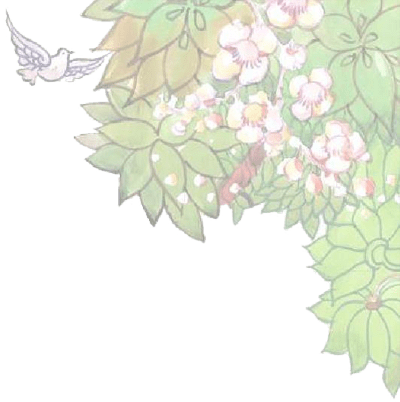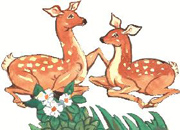はじめに


挿し絵入りのブッダの生涯の物語を書く、というアイデアは、ハンダカ・ヴィッジャーナンダ氏から、およそ二年前に寄せられた。かれはその原稿を書くようにとわたしに依頼し、ミャンマーの著名な水彩画家であるウ・チョウ・ピュー・サン氏に挿し絵の話をもちかけた。それ以来、われわれは手を携えて、親密に協力しながら、このプロジェクトを進めてきたのである。
現在、ブッダの生涯を扱った書物はたくさんある。そのうちのいくつかはシッダッタ王子の誕生からさとりに達するまでの物語で、他のものでは、入滅まで、などだ。しかしながら、そのどれもが生涯のすべてを順序立てて十分に物語っている、というものではない。もし、本書にブッダの生涯のすべてを盛り込んだ「報告書」を期待されるなら、失望されるだけだろう。ブッダの生涯についての最も完全な権威あるものといえば、仏教徒の聖典(三蔵(ティピタカ))そのもの以外にはないのだ。
(訳注:三蔵とは、経蔵、律蔵、論蔵。また経蔵とは、長部、中部、相応部、増支部、小部の各経典からなるパーリ五部経典)
わたしが本書を執筆中の日々を過ごしたミャンマーでは、ブッダの生涯の物語について浩瀚な学術書がある。偉大なる学僧、最高賢者(バッダンタ)ウィチッタサーラビワンサ、というより、ミングン・サヤドーとして知られている方が書かれたものである。彼の方は、四十冊の分厚い書物からなる三蔵のすべてを完璧に記憶されていた。さらに加えて註釈書(アッタカター)(義疏)と復註(ティーカー)(註釈の註釈)にも精通されておられ、ブッダの教理に堪能の達人として最高の名誉称号である持三蔵(ティピタカダラ)・法宝(ダンマバンダ)の持者(ガーリカ)を獲得されている。その学術書は「The Great Chronicle of Buddhas(諸佛大年代記)」というタイトルで英訳されている。全六巻十冊からなる。ミングン・サヤドーへのわたしの大いなる尊敬をひとまず脇に置くとして、この浩瀚な学術書といえども、やはり、完全なものではないと見なされる、と言ってさしつかえない。くず拾いのスニータ(本書36話、以下同)、七歳の阿羅漢ソーパーカ(35話)、切り取った指を首飾りにした殺人鬼アングリマーラ(53話)などの話は見当たらないのだ。しかし、それなら「ブッダの生涯の完全な物語なんて、見つからないのではないか?」ときかれるかも知れない。いや、確かに見つけられるのだ。しかし、見つけられるのは、三蔵それ自体の中からのみと、併せてその註釈書と復註の中からなのである。問題は、手に入る材料のすべてがそのような膨大な経典の中に分散しており、初めから終わりまで年代順にそろった物語を得るためには、それらを拾い集め、配列し直す必要がある、ということである。
わたしは、ブッダの生涯の物語を代表する六十九話を選んだ。ブッダがスメ-ダとして存在していた過去世から話は始まり、菩薩(ボーディサッタ)(訳注:さとりに達して覚者(ブッダ)となる以前の修行者)としての最後の生存となるシッダッタ王子の誕生、ブッダとなって以降の伝道教化の四十五年間、般涅槃(パリニッバーナ)(入滅)まで、である。それにはまた、仏弟子たちが、世代から世代へ、二十一世紀に至るまで、ブッダの教えを護り、進め、広めてきたやりかたも含まれている。本書を話から話へと読んでいくことによって、ブッダの生涯の最初から最後まで、その全体像をあなたは得ることができるだろう。かれの生涯、そして仏弟子と仏“敵”たちの多くの面がわかるだろう。さらにまた、ブッダが人生の諸問題についてどのように対処し、説き諭し、解決したか、わかるだろう。それらは二千五百年以上前の人間が直面していた諸問題だが、今日でもいまだにみつかるものである。
幼い男の子の突然の死で半狂乱になる若い母キサーゴータミー(58話)に、あなたは出会うだろう。夫と夫の両親にひどく嫌われることを恐れ、わが子の死という事実を、彼女は受け入れたくなかったのだ。男の子はただ病気なだけ、と自分を納得させ、薬を見つけようと家から家を訪ねて行くのである。この話は、愛するこどもを亡くして落ち込む今日の母親たちを思い起こさせる。ちょうどパターチャーラー(59話)が、夫、こどもたち、その他の家族に次から次へとたった一日で死なれて気が狂い、裸でさまようのと同じように、今日でも愛する両親、夫、妻、こども、ガールフレンド、ボーイフレンド、あるいは財産を失って、気が狂ってしまう人たちを見かけるのだ。
あの世尊、一切知者でさえ、過去世の行為(業)の果報から逃れられなかった、ということをあなたは知るだろう。弟子が裏切り、暗殺しようとした一方、嫉妬した異教の指導者が、あらゆるやりかたで中傷し、非難し、大勢の人たちの前で論争しようとした。他方、彼の方はまた多くの者たちから敬愛され、賞賛され、礼拝され、崇敬され、尊敬される師である。しかし、生涯の浮き沈みに世尊がどのように対処されたかが、かつて存在した精神的指導者の中でも、彼の方が最も偉大である、と証明しているのである。
そのうえさらに、世尊の両親、息子、弟子たち、“敵たち”、異教の指導者たちなどへの態度も知ることになるだろう。しかし、あらゆるものごとの中で最も偉大なのは、世尊がわたしたちに最高の幸福への道を示されていることだ。これは仏教独自のもので、他の宗教の教説には存在しない。最高の幸福への道は、民族やカースト、社会的な性差別、国籍、経済的地位、社会的身分、その他の特徴でも差別せず、生きとし生けるものすべてに対して普遍的である。天上界の神々や地獄の悲惨な生命にすら当てはまるのだ。 はじめに(全文)

INTRODUCTION
The idea of writing an illustrated life story of the Buddha came from Mr. Handaka Vijjānanda about two years ago. He requested me to prepare the text and approached U Kyaw Phyu San, the well-known Myanmarese water colour artist, for the illustrations. Since then, we have worked hand in hand for this project.
Today, one can find many books on the Buddha’s life story. Some narrate the birth of Prince Siddhattha up to the attainment of His Buddhahood, while others up to His passing away, etc. However, none of them narrates the story in full exposition. If you expect this book to be an all-in account of the Buddha’s life story, you will only meet disappointment. The most complete authority on the Buddha’s life is none other than the Buddhist Sacred Text (the Tipiṭaka) itself.
In Myanmar, the country where I spent my days to write this book, one can find an extensive treatise on the Buddha’s life story written by the great scholar monk Bhaddanta Vicittasārābhivaṁsa—better known as Mingun Sayadaw. He could completely memorize the whole Tipiṭaka, which
consists of forty massive books. Moreover, he was also well-versed in the Aṭṭhakathā (Commentaries) and the Ṭīkā (Sub-commentaries), earning him the title of Tipiṭakadhara Dhammabhaṇḍāgārika, the highest honourary title in proficiency on the Buddha’s Teachings.
His treatise has been translated into English under the title The Great Chronicle of Buddhas. It consists of six volumes in ten books. Without relegating my great respect to him, I may say that even this extensive treatise is yet to be considered a complete one. One cannot find the story of the Venerable Sunīta, Sopāka, Aṅgulimāla, etc. But then, you may ask: “Can’t we find the complete life story of the Buddha?” Surely, we can. But, we can only find it in the Tipiṭaka itself, together with the Commentaries and Sub-commentaries.
The problem is that all the available materials are scattered in those voluminous books that we need to collect and rearrange them in order to get the complete story in chronological order.
I have selected the sixty-nine stories which represent the life story of the Buddha. The narration starts from the Buddha’s past existence as Sumedha, the last birth in His existence as the Bodhisatta Prince Siddhattha, His forty-five years of ministry after becoming a Buddha, until His Parinibbàna. It also includes the way that His disciples have been preserving, promoting and propagating His Teachings, from generation to generation, up to the twenty-first century. By reading this book, chapter by chapter, you will get the complete picture of the Buddha’s life. You will find many aspects of His life, His disciples and His ‘enemies’. You will also find how the Buddha handled, advised and solved life problems which have been facing man more than 2,500 years ago, but which we still find even today.
You will meet the young mother Kisàgotamã, who was deranged by the sudden death of her little son. Being afraid that her parents-in-law and husband would despise her, she did not want to accept the fact of her son’s death. Convincing herself that her son was only sick, she went around house to house, trying to find medicine for her son, a reminiscence of those depressed mothers who lose their beloved children today. Just as Pañàcàrà became mad, finding her husband, children and families dead one after another on one single day, even so, today we find people becoming mad being bereaved of their beloved parents, husbands, wives, children, girlfriends, boyfriends, or by losing their properties.
You will come to know that even the Blessed One, the Omniscient One, could not escape the fruits of His past actions. His disciple betrayed and tried to assassinate Him while other jealous religious teachers tried many ways to calumniate, disgrace, or debate with Him before the multitude. On the other hand, He is also a teacher who was loved, praised, honoured, venerated and respected by many. But, how the Blessed One dealt with the ups and downs of life proved Him to be the greatest spiritual teacher who ever lived.
Furthermore, you will find the Blessed One’s attitude towards His parents, son, disciples, ‘enemies’, other religious teachers, etc. But, the greatest of all is how the Blessed One shows us the way to the highest happiness, which is unique to Buddhism, and which does not exist in other religious views. The way to the highest happiness is universal to all sentient beings, without any discrimination of race, caste, gender, nationality, economic status, social position, or other attributes. It is even applicable to celestial beings and woeful beings. INTRODUCTION ALL

アシン・クサラダンマ長老
1966年11月21日、インドネシア中部のジャワ州テマングン生まれ。中国系インドネシア人。テマングンは近くに3000メートル級の山々が聳え、山々に囲まれた小さな町。世界遺産のボロブドゥール寺院やディエン高原など観光地にも2,3時間で行ける比較的涼しい土地という。インドネシア・バンドゥンのパラヤンガン大学経済学部(経営学専攻)卒業後、首都ジャカルタのプラセトエイヤ・モレヤ経済ビジネス・スクールで財政学を修め、修士号を取得して卒業後、2年弱、民間企業勤務。1998年インドネシア・テーラワーダ(上座)仏教サンガで沙弥出家し、見習い僧に。詳しく見る
奥田 昭則
1949年徳島県生まれ。日本テーラワーダ仏教協会会員。東京大学仏文科卒。毎日新聞記者として奈良、広島、神戸の各支局、大阪本社の社会部、学芸部、神戸支局編集委員などを経て大阪本社編集局編集委員。1982年の1年間米国の地方紙で研修遊学。2017年ミャンマーに渡り、比丘出家。詳しく見る

※ 画像やテキストの無断使用はご遠慮ください。
All rights reserved.

